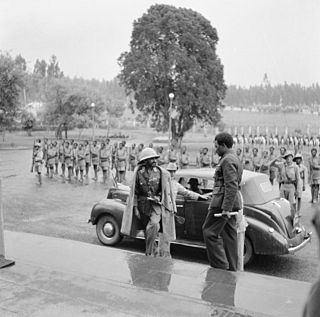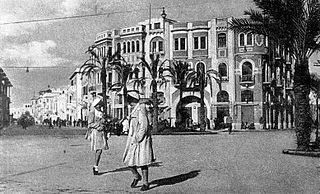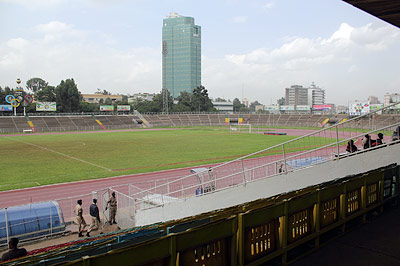History
In May 1936 the Italians proclaimed the creation of the Italian Empire in east Africa, with capital Addis Abeba [1] .
Soon the city was improved with many structures, from paved roads to sewage systems. A new urban masterplan was studied for the city, that was approved in 1938 and by late 1940 Addis Abeba (where the Italian were more than one third of the inhabitants) was full of constructions (that were blocked because of WW2).
Indeed the Italians invested substantively and created the "imperial road" between Addis Abeba and Massaua, the Addis Abeba - Mogadishu and the Addis Abeba - Assab. [2] .The Italians also built more than 4,500 km of roads linking the country to Addis Abeba while beyond 900 km of railways were reconstructed or initiated (like the railway between Addis Abeba and Assab). Italians even created new airports and in 1936 started the worldwide famous Linea dell'Impero, a flight connecting Addis Abeba to Rome. The line was opened after the Italian conquest of Ethiopia and was followed by the first air links with the Italian colonies in Italian East Africa, which began in a pioneering way since 1934. The route was enlarged to 6,379 km and initially joined Rome with Addis Ababa via Syracuse, Benghazi, Cairo, Wadi Halfa, Khartoum, Kassala, Asmara, Dire Dawa. [3] There was a change of aircraft in Benghazi (or sometimes in Tripoli). The route was carried out in three and a half days of daytime flight and the frequency was four flights per week in both directions. Later from Addis Ababa there were three flights a week that continued to Mogadishu, capital of Italian Somalia.
The most important railway line in the African colonies of the Kingdom of Italy, the Djibouti-Addis Ababa long 784 km, was acquired following the conquest of the Ethiopian Empire by the Italians in 1936. The route was served until 1935 by steam trains that took about 36 hours to do the total trip between the capital of Ethiopia and the port of Djibouti. Following the Italian conquest was obtained in 1938 the increase of speed for the trains with the introduction of four railcars high capacity "type 038" derived from the model Fiat ALn56. [4]
These diesel trains were able to reach 70 km/h and so the time travel was cut in half to just 18 hours: they were used until the mid 1960s. [5] At the main station of Addis Abeba there were some bus connections to the other cities of Italian Ethiopia not served by the railway. [6] Additionally, near the Addis Ababa station was created a special unit against fire, that was the only one in all Africa.
A remarkable effort was made to improve healthcare in Ethiopia (mainly in Addis Abeba): beside the doctors belonging to the Italian Africa Health Corps, flanked by 450 military doctors, there were about 500 civilian doctors (232 specialists, among whom 30 pediatricians, and 262 general practitioners). Special maternity wards were built in the hospitals situated in the main locations. The new Italian hospital in Addis Ababa had a delivery room and a pediatric clinic, with a capacity of over 100 beds in its various sections: expectant mothers, postpartum mothers, babies’ room, gynecological ward, infectious diseases, visitors’ room, etc. The children’s hospital was subdivided into separate wards for babies and older children, for infectious, gastro-intestinal or pulmonary diseases, etc. Moreover, a university-type faculty was founded in 1941 in Asmara to train nurses....Social life in Addis Ababa (and Asmara) was pulsating just like that of any other European town. At the heart of the city were the markets: in the capital (Addis Abeba) in 1939 over 75,000 heads of cattle had been slaughtered and thousands of tons of foodstuffs had been sold. Dozens of shops and even department stores were opened in both cities. Leisure activities also boomed: in Addis Ababa four cinemas had been built...New dancehalls, restaurants and bars were being opened everywhere. The working men’s clubs and numerous sports and recreational societies, supported by local government and by the PNF, organised the colonists’ (and native Etiopians) free time.
Because the Italian rule lasted just five years, only a few of the many Italian buildings & projects were completed: one was the Addis Abeba Stadium, inaugurated in spring 1940. Originally in 1937 it was called "Campo sportivo Littorio" [8] , while in 1940 it was enlarged with a tribune and the athletic lanes section.
In spring 1941 ceased to exist the Italian administration of Addis Abeba and most of the more than 40,000 Italians living in the city started to return to Italy.

Italian East Africa was an Italian colony in the Horn of Africa. It was formed in 1936 through the merger of Italian Somalia, Italian Eritrea, and the newly occupied Ethiopian Empire, conquered in the Second Italo-Ethiopian War.

Dire Dawa is a city in eastern Ethiopia near Somali border and one of two chartered cities in Ethiopia. It is divided administratively into two woredas, the city proper and the non-urban woreda of Gurgura.

Asmara International Airport, IATA: ASM, ICAO: HHAS, is the international airport of Asmara, the capital of Eritrea. It is the country's largest airport and, as of 2017, the only one receiving regularly scheduled services.
Articles related to Eritrea include:

The history of Addis Ababa, Ethiopia, formally begins with the founding of the city in the 19th century by Ethiopian Emperor Menelik II and his wife Empress Taytu Betul.

Castel Benito was an airport of Tripoli created by the Italians in Italian Libya. Originally, it was a small military airport, but it was enlarged in the late 1930s and was later used by the British RAF after 1943. It was called RAF Castel Benito by the Allies.

The Ethio-Djibouti Railway (French: Chemin de Fer Djibouto-Éthiopien is a metre gauge railway in the Horn of Africa that once connected Addis Ababa to the port city of Djibouti. The operating company was also known as the Ethio-Djibouti Railways. The railway was built in 1894–1917 to connect the Ethiopian capital city to French Somaliland. During early operations, it provided landlocked Ethiopia with its only access to the sea. After World War II, the railway progressively fell into a state of disrepair due to competition from road transport.

Castel Benito was an airport of Tripoli created by the Italians in Italian Libya in the early 1930s. It was called RAF Castel Benito by the Allies after 1943.

Railway transport in Somalia consisted of the erstwhile Mogadishu–Villabruzzi Railway and secondary tracks. The system was built during the 1910s by the authorities in Italian Somaliland. Its track gauge was 950 mm, a gauge favoured by the Italians in their colonies in the Horn of Africa and North Africa. The railway was dismantled in the 1940s by the British during their military occupation of Italian Somaliland, and was subsequently never rehabilitated.

Italian Eritrea was a colony of the Kingdom of Italy in the territory of present-day Eritrea. The first Italian establishment in the area was the purchase of Assab by the Rubattino Shipping Company in 1869, which came under government control in 1882. Occupation of Massawa in 1885 and the subsequent expansion of territory would gradually engulf the region and in 1889 borders with the Ethiopian Empire were defined in the Treaty of Wuchale. In 1890 the Colony of Eritrea was officially founded.
Football is the most popular sport in Ethiopia. Although not one of the leading footballing nations in Africa, Ethiopia has produced some outstanding teams at both club and international level as well as some talented individual players.

Amhara Governorate was one of the six governorates of Italian East Africa. Its capital was Gondar. It was formed in 1936 from parts of the conquered Ethiopian Empire following the Second Italo-Ethiopian War. It had a population of more than 2 million inhabitants. In November 1938 some territory of Amhara in the Scioa region was given to the neighboring Addis Abeba Governorate, enlarging it to the Scioa Governorate.

Italians of Ethiopia are the immigrants from Italy who moved to live in Ethiopia as far back as the 19th century, and their descendants. King Menelik II did not allow the sale of lands belonging to Ethiopia to Italians (Eritrea) and probably allowed France (Djibouti) to solidify his centralized power and have external trading partners. Most of the Italians moved to Ethiopia after the Italian conquest of Abyssinia in 1936. Italian Ethiopia was made of Harrar, Galla-Sidamo, Amhara and Scioa Governorates in summer 1936 and became a part of the Italian colony Italian East Africa, with capital Addis Abeba and with Victor Emmanuel III proclaiming himself Emperor of Ethiopia.

Italian Ethiopia, also known as the Italian Empire of Ethiopia,, was an Italian formal entity of the territory of the conquered Ethiopian Empire. Italian Ethiopia was not an administrative entity, but the formal name of the former territory of the Ethiopian Empire which now constituted the Governorates of Amhara, Harar, Galla-Sidamo, and Scioa after the establishment of Italian East Africa.

The Railway Stations in Somaliland were served by the Mogadishu–Villabruzzi Railway of 114 km.

The Scioa Governorate, also known as the Shewa Governorate, was one of the six governorates of Italian East Africa. It was formed in 1936 from parts of the conquered Ethiopian Empire following the Second Italo-Ethiopian War with its administrative capital being Addis Abeba.

Italian Benghazi was the name used during the Italian colonization of Libya for the port-city of Benghazi in Italian Cyrenaica.

The Italian colonial railways started with the opening in 1888 of a short section of line in Italian Eritrea, and ended in 1943 with the loss of Italian Libya after the Allied offensive in North Africa and the destruction of the railways around Italian Tripoli. The colonial railways of the Kingdom of Italy reached 1,561 kilometres (970 mi) before WWII.

The Imperial Line was a flight route of the Italian national airline Ala Littoria between 1935 and 1941 during the Fascist era. It was the longest route in the Italian colonial empire in Africa and "the jewel in Ala Littoria's crown". It connected Rome with Benghazi (Libya), Asmara (Eritrea), Addis Abeba (Ethiopia) and Mogadishu (Somalia). It carried passengers and mail. Italy ultimately lost control of the route during World War II.

The Petrella Airport was the first international airport in Italian Somalia. It was opened in 1928 -just 3 miles south of Mogadishu- with the name "Enrico Petrella" in honor of an Italian pilot who died a few years before in the same airport of Italian Mogadiscio. In 1941 the airport was partially destroyed during WW2 and remained inactive for some years as a civilian airport: only military airplanes used it. In 1950 was reopened as a civilian airport by the Italian authorities of the ONU Fiduciary Mandate.














